Maximizing battery life is a common concern for many smartphone users, including those using the latest iPhone 15. Even though the iPhone 15 was supposed to have the best battery life on an iPhone yet (excluding the previous Plus models), the reality has turned out to be disappointing.
While Apple is working on a fix, it doesn't hurt to take extra steps to ensure more time between charging while waiting for it. Implementing certain practices and settings adjustments can significantly extend the battery life of your device, ensuring it remains functional and reliable throughout the day. Let's get going.
iPhone 15 Battery Drain Explained
The latest devices in the iPhone 15 lineup have been experiencing a widespread overheating issue, reported by scores of users online. Apple, too, has officially acknowledged that there is a problem and said they will fix it in an upcoming update. So, make sure to keep your iPhone updated with the latest software.
Apple has also said that the overheating is mainly caused because of two issues.
Apple says that it is common for an iPhone to run hotter in the first few days after being set up, as your iPhone is working overtime in the background to get things running. It is still indexing and downloading all your apps/ data, and if you've restored your iPhone from a backup and you have a large photo library, it takes time to download it. This can lead to overheating and battery drainage issues.
Another issue Apple has identified comes from some third-party apps, namely Instagram, Uber, and Asphalt. While Instagram has already pushed an update to solve the issue (make sure you update to the latest version of the app), Apple is working with the other developers directly to fix this issue. Meanwhile, you can try to limit your usage of both the apps – Uber and Asphalt.
Maximize Your iPhone 15 Battery Life
There are a few things you can do to maximize your iPhone's battery life. While some of them are specific to the iPhone 15 lineup, others are general steps that can help reduce battery usage.
1. Monitor and Manage Battery Usage
You can monitor how apps are using your battery and better manage it with these insights.
- Open the Settings app on your iPhone and navigate to 'Battery'.

- Here, you can observe which apps are consuming the most battery and make informed decisions on app usage.

- You can also switch to the ‘Last 10 days’ view to analyze the apps that are taking up the most battery.

- Also, look out for the phrase 'Background Activity' underneath an app to determine if it's unnecessarily using battery in the background.

2. Limit/ Turn Off Live Activities
Live Activities is a lock screen feature that helps you stay on top of things happening in real-time that Apple implemented last year. While they're uber cool, they can also have a significant impact on your battery life, especially when combined with the Always On Display on the iPhone 15 Pro models.
You can turn off/ limit Live Activities to preserve your battery life.
- To turn off Live Activities for the Lock Screen entirely, go to 'Face ID & Passcode' from the Settings app.

- Enter your iPhone's passcode. Then, scroll down and disable the toggle for 'Live Activities'.

This will completely turn off Live Activities for the Lock Screen.
However, they'll still appear in the Dynamic Island when your iPhone is unlocked. While you cannot turn off Dynamic Island, you can dismiss an animation by swiping left on it (swipe left on the Dynamic Island again to bring it back).
Turning off Live Activities entirely might not be the answer you're looking for, as they can be especially helpful in certain instances, such as when you're waiting for an order or a cab.
Alternatively, you can turn off Live Activities on an app-by-app basis. So, while you might want to keep them enabled for your Cab booking apps, you might want to disable them for Sports Scores when you want to extend battery life. You can turn off Live Activities for an app by navigating to Settings > App Name > Live Activities and turning off the toggle for 'Allow Live Activities'.

3. Enable Low Power Mode
When you turn on Low Power Mode on your iPhone, it reduces the amount of power that your device uses when the battery gets low. This mode disables or reduces some features to save battery life, such as Mail Fetch, Hey Siri, background app refresh, motion effects, and animated wallpapers.
You might not want to use it all the time, but at times when you desperately need some extra juice, it's very handy. Enabling Low Power Mode when you're out can especially be helpful in the days when your iPhone 15 is still very new, as it will restrict the background usage to times when you want it.
- To enable Low Power mode, go to
Settings>Batteryand enable the toggle for 'Low Power Mode'.

- You can also add Low Power Mode to the Control Centre (swipe down from the right corner of the screen to access it). To add it to the Control Centre, go to
Settings>Control Centreand then, tap the '+' icon on the left of the 'Low Power Mode' tile.

You can even ask Siri to turn it on.
4. Delete the Lock Screen and Home Screen Widgets
Widgets are great for getting information without opening the app, but if you have widgets on your Lock Screen or Home Screen that you have no use for, you'd be better off deleting them. Widgets run in the background to fetch data to update you regularly, which consumes battery.
Now if you do use the widget, we won't recommend deleting it; widgets on iPhones do consume battery resources, but not as much as opening the app and using it actively would.
5. Turn Off Proximity Sharing for AirDrop
Apple introduced Proximity Sharing for AirDrop in iOS 17, which is triggered by bringing two iPhones close together. If you keep accidentally triggering it, it can drain your battery, and it might be best to turn it off.
- To turn off Proximity Sharing, open the Settings app and navigate to 'General'.

- Then, tap the option for 'AirDrop'.

- Disable the toggle for 'Bringing Devices Together' under Start Sharing By.

This will disable all features that are enabled by Proximity Sharing AirDrop, like sharing photos, NameDrop, SharePlay using AirDrop, etc.
If you don't want to completely disable the feature, the alternative would be to turn off 'AirDrop' from the Control Center and enable it when you need to use the service.
6. Adjust Screen Brightness and Manage Auto-Lock
Lowering the brightness can significantly save battery life. You can also set the Auto-Lock to the shortest time that works for you to minimize the display being on unnecessarily.
- To adjust screen brightness and manage auto-lock settings, open the Settings app and navigate to 'Display & Brightness'.

- Make sure your brightness isn't too high; you can also adjust the screen brightness from the Control Centre.

- Additionally, tap the option for 'Auto-Lock'.

- Then, select '30 seconds' as your preferred setting.

For iPhone 15 Pro and Pro Max users, there's another setting here you might want to pay attention to – Always On Display. Apple introduced the Always On Display to its lineup last year with the iPhone 14 Pro models. And while the AOD is meant to not have too much of a toll on your battery life with its refresh rate as low as 1 Hz, the truth is when you're already struggling with it, every last bit counts. And iPhone 14 Pro users reported seeing a difference in the battery life when AOD is turned off.
- Tap the option for 'Always On Display' from the Display & Brightness settings.

- Then, turn off the toggle for 'Always On Display'.

7. Enable Dark Mode
Dark mode can help save battery life, especially on OLED displays. When an OLED display shows a black image or interface, it essentially turns off all the pixels, thereby consuming less power as compared to displaying a white or colored image where the pixels need to be lit. So, you see, it's more than an aesthetic choice.
- To enable Dark Mode, go to
Settings>Display & Brightnessand select 'Dark ' under 'Appearance'.

- You can also schedule Dark Mode for particular hours by enabling the toggle for 'Automatic' and setting a schedule from 'Options'.

Additionally, you can add 'Dark Mode' to the Control Center for faster access.
8. Limit Background App Activity
While Low Power Mode controls apps from refreshing in the background, it's not a desirable setting to have enabled all the time. Instead, you can also limit background app activity on a per-app basis which allows you to customize your experience.
- Navigate to
Settings>Generaland tap the option for 'Background App Refresh'.

- Here, you can review the apps that you want to be able to refresh the content in the background and turn off the toggle for others.

- You can also configure whether you want Background App Refresh to be available only on Wi-Fi or on both Wi-Fi and cellular data. Tap the 'Background App Refresh' option at the top.

- Then, select 'Wi-Fi' or 'Wi-Fi & Cellular Data'.

9. Manage Location Services
Limiting Location Services can also help you preserve battery life. While you might not want to entirely disable the feature as it will handicap some apps' ability to work, you can disable it on an app-to-app basis.
- Go to 'Privacy & Security' from the Settings app.

- Then, tap the option for 'Location Services'.

- Here you can review the apps that are using Location Services and choose 'Never' to disable location access for particular apps.

10. Disable Keyboard Haptics
Keyboard Haptics were introduced in iOS 16. When enabled, your keyboard provides a very satisfying haptic feedback while typing. However, as satisfying as it is, it also affects the battery life of your iPhone.
- To disable Keyboard Haptics, go to 'Sound & Haptics' from the Settings app.

- Then, navigate to 'Keyboard Feedback'.

- Turn off the toggle for 'Haptic'.

11. Manage Notifications
The sheer volume of notifications we receive in a day is downright chaotic. Apart from the fact that most of these notifications are only distractions and not really important, did you know that they also affect your battery life?
While you can turn off unimportant notifications, there's also an alternative if FOMO prevents you from going down that route. Instead of receiving them throughout the day, you can choose to enable 'Scheduled Summary' on your iPhone to receive all the non-important notifications in one go at scheduled times.
- To enable scheduled summary, navigate to
Settings>Notifications>Scheduled Summary.

- Then, enable the toggle 'Scheduled Summary' and set the feature up.

You can refer to our complete guide, linked below, to learn more about the feature.

12. Avoid Extreme Temperatures
Keep your iPhone within Apple's recommended temperature range (32°F to 95°F/ 0° C to 35° C) to prevent permanent battery damage, as Apple says that temperatures outside this range can damage the battery capacity of your iPhone.
13. Disable Siri's Active Listening
While "Hey Siri" (or, now, only "Siri" as well in iOS 17) is a great feature that lets you use Siri hands-free, most people hardly ever use it.
If you do not use Siri frequently, consider disabling Siri's active listening to save battery, especially in these early days when your iPhone 15 is still rather new. Because Hey Siri is listening for that “Hey Siri” command, the microphone is always active. While the effect on the battery is not substantial, it's worth paying attention to when you're grasping at straws.
- To disable the feature, navigate to
Settings>Siri & Search>Listen for.

- Then, select 'Off' from the options.

14. Manage Wireless, Cellular, and Bluetooth Settings
To truly maximize your battery life, you can turn off Cellular Data, Wi-Fi, and Bluetooth when not needed. While it's not an ideal solution, it can be helpful especially when you're traveling.
By following the above steps and making a few adjustments to your settings, you can significantly improve the battery life of your iPhone 15, making sure it lasts through the day. And once your iPhone 15 has had time to settle down, i.e., it is no longer indexing and working overtime to get things ready, you'd find that the battery life isn't affected as much anyway.



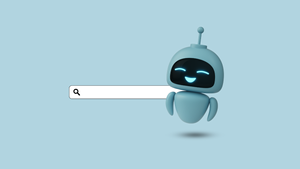
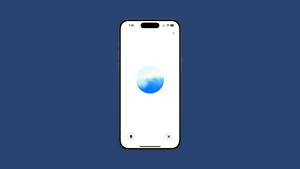
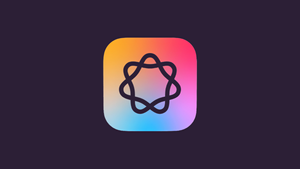
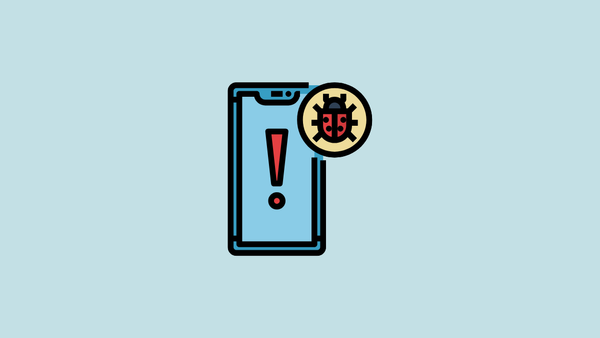


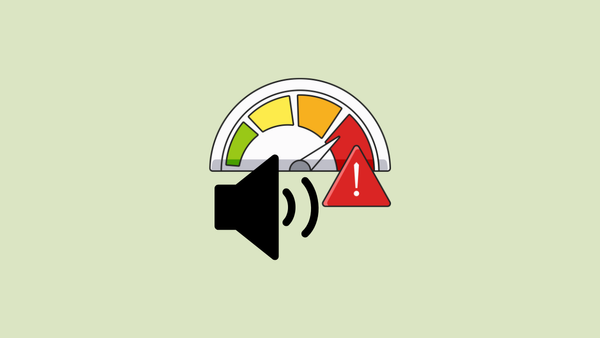

Member discussion